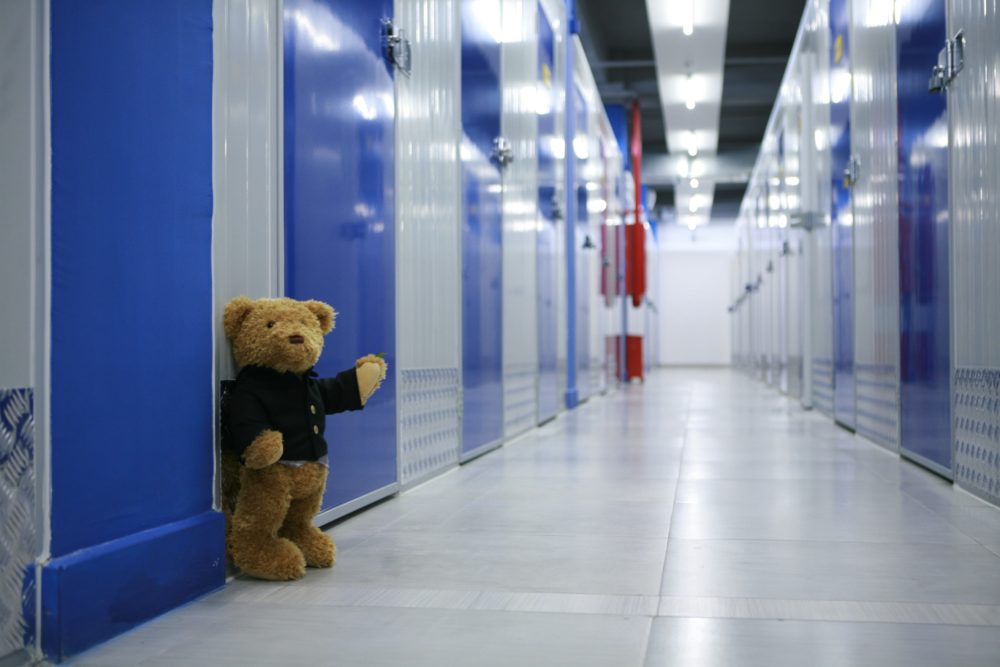Downtown U-Lok Storage Blog
Keep up with the latest News postings!

Christmas and a storage locker, you say? There may not be an obvious connection between the two, but Christmas is a time of hustle and bustle at U-Lok. We stay open throughout the holidays to accommodate any last-minute needs of our customers. Here’s how your off-site storage locker can make Christmas easier, and stress free:
Santa’s helper
As you prepare for Christmas and cross off items on your family and favorite’s wish list, where do you store all the gifts away from prying eyes? Your off-site storage locker! Reduce the Christmas stress and clutter around you so you can more fully nurture family traditions and enjoy a more relaxing holiday season.
Tip! Keep a copy of your Christmas list in your locker along with wrapping paper, tags, ribbon and bows, scissors and scotch tape.
Save money on Christmas gifts
Keeping watch for deals and shopping year round will save you money, time and stress! Once you determine your Christmas budget and make a list of gift ideas, you can find some great bargains, not only at after holidays sales, but by watching for deals throughout the year, even in July.
Tip! To be most efficient, wrap and tag each gift as you purchase it and update your list. For maximum secrecy, we suggest you wrap while visiting your locker.
Christmas decorations
A sure sign that Christmas is around the corner, is the sight of our clients taking their Christmas trees and ornaments out of the storage units. We have found that our client’s zest for Christmas is directly proportional to the size of their Christmas tree! And boy have we seen some big trees (artificial), due to our 10’ high ceilings. It’s surprising how much room properly organized and protected Christmas decorations take up, so keeping them in a storage locker will protect against moisture and mildew in the garage or shed, while freeing up space that can be more effectively used.
Tip! Use egg cartons to store you fragile baubles; wrap your lights around a piece of cardboard to prevent tangling.
Seasonal items, clothing and gear
Christmas time means skiing, snowboarding, snowshoeing and skating season. It also means warm, wooly blanket season. Our clients use their storage lockers to swap out their bulky winter items and winter sports gear with their summer items such as patio furniture, clothing and sports gear.
Tip! Stand up long items such as skis, poles, rakes, shovels in tall garbage containers.
We hope this article highlights the benefits of your storage locker during the winter and holiday season. Downtown U-Lok will be open regular hours during the holidays except for Christmas Eve (Close at 2pm) and New Years Eve (close at 2pm) and closed all day on Christmas Day, Boxing Day and New Year’s Day. We’d love to help make your holiday season as stress and clutter free as possible; get in touch with us and inquire about locker sizes perfect for your needs.

How much extra space do you really need? This question can almost be deemed rhetorical. We always want more things, and as a result, need more space to organize it. To that point, when you make the decision to declutter and rent an off-site storage locker, you need to figure out which size is ideal for your needs. A larger than needed locker is a waste of space and money, while a smaller than required locker will be a nightmare to organize and fit all your belongings. This article will help you figure out the right size for you and the most popular sizes that may fit your general needs.
Talk to your storage facility experts
At U-Lok, we have over 40 different sizes and I can bet that there is a locker perfectly suited for your needs. The easiest and most convenient way to determine your ideal locker size is to talk to the sales representatives and let them know what your core needs are for the locker. They might ask you to outline the largest items you intend to store, this will help them recommend the best size for your needs. It’s good to know that if you plan to add or reduce your stored items in the future, it’s easy to upsize or downsize your locker size. Make a list of items going to storage.
Do it yourself
Maybe you are adventurous and wish to find your dream locker size for yourself. Very well, here’s how we recommend doing it.
- Make a list of all the items/goods you wish to put in the storage locker.
- Divide the items into small, medium and large categories based on their size.
- Take inventory again and figure out if there are some things you would like to exclude at this point.
- Make a rough estimate of the cubic space required for the largest items.
- Based on the dimensions and cubic volume of large items, you should be able to estimate the locker size you will need.
We recommend over estimating a little bit in case you add more things in the future and leaving yourself enough space to maneuver in the locker, for ease of accessing your belongings. Remember to put items that you need to access more often towards the front of your locker.
Speaking from experience, there are certain sizes that appeal to the majority of our customers. These are the most popular sizes in our facility and they might be just right for you as well:
- 5’ x 5’ x 10’ unit: This unit size is best classified as a “small closet” size. It is perfect to store your seasonal clothing, boxes, skiing gear, bicycles and even small dressers and mattresses. These units are deceptively roomy, and you can take advantage of the 10’ high ceilings to really pack it up. You can get creative with the organizing and easily turn this into “your extra closet.”
- 5’ x 10’ x 10’ unit: This unit is a great compromise between storing extra items that you don’t need in your living space and storing items of an entire small 1-bedroom apartment. If your toys are a little bigger than others or if you just have a lot more extra stuff than the little 5x5x10 can handle, go for this unit. It will take your king size mattress, dresser, bed frame (best dismantled), sofa and a whole load of boxes, and still leave you space for more. Use the 10” high ceilings to your advantage.
- 10’ x 10’ x 10’ unit: Have a big move coming up? This unit can handle the contents of your 2-bedroom house/apartment with ease. Or, are you looking to store inventory for your business? This unit can house 4 standard pallets with ease, and that’s without using the 10’ high ceilings!
P.S. If you need more space in your life, at Downtown U-Lok Storage, we are always happy to give you a tour of our lockers. This is an excellent time to visualize your belongings in the locker, look at other sizes to consider, and see all the security features of the facility, first hand! Contact us to schedule your complimentary tour at any time during our long, staffed hours.
Useful tip – If your storage needs change, it’s easy to downsize or up-size your locker size.
